An outdoor path comes in one of two categories: 1) a directional tool to move people to a destination as efficiently as possible, or 2) a device that allows people to engage the senses as they meander toward a destination at a leisurely pace.
I spoke with landscape architect Sandy Ayers, co-owner of The Garden Route Company, about the nuances of getting the most out of each type of path.
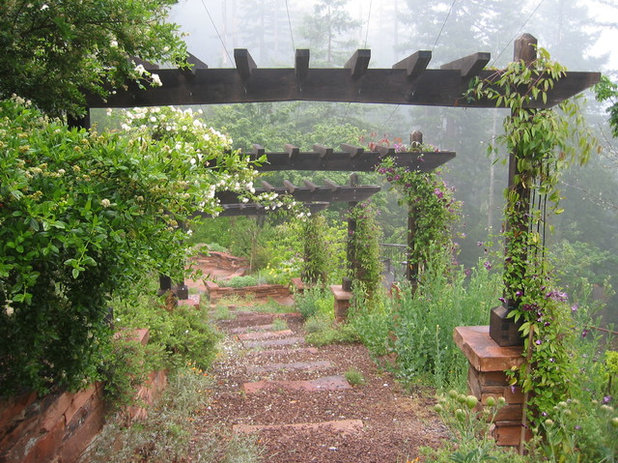
The Garden Route Company
"The three most important things to designing a path are ensuring that it leads somewhere, that it stays in character with its surroundings and it's comfortable to walk on,” Ayers says.
Let’s break this down step by step.
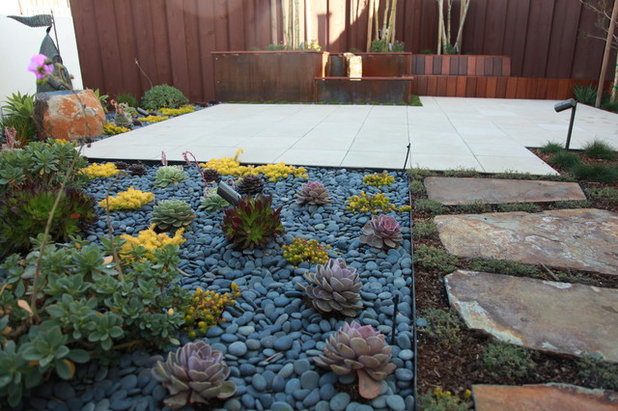
The Garden Route Company
1. Ensure the proposed path leads somewhere. A successful path, no matter what its type, has to have a destination, otherwise it's just plain pointless and frustrating. The phrase "wild goose chase" comes to mind.
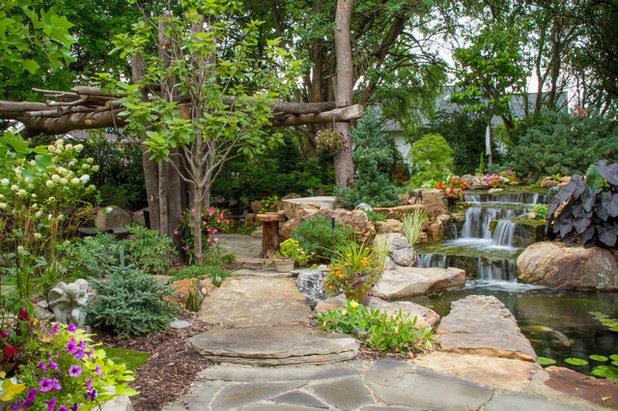
Aquascape
But that doesn’t mean the destination has to be a front door or garage. It can be a serene fountain with a bench or a rock garden. The idea is to give people a reward at the end of their trip.
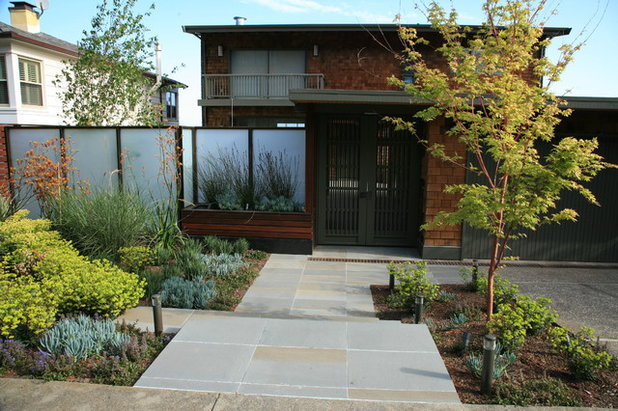
The Garden Route Company
2. Keep the path in character with its surroundings. Path materials that don’t make sense will feel jarring and confusing. Choose either materials that fit an existing theme of your home's exterior or garden, or natural features that will blend harmoniously with what’s already in the vicinity.
More on path materials in a bit.
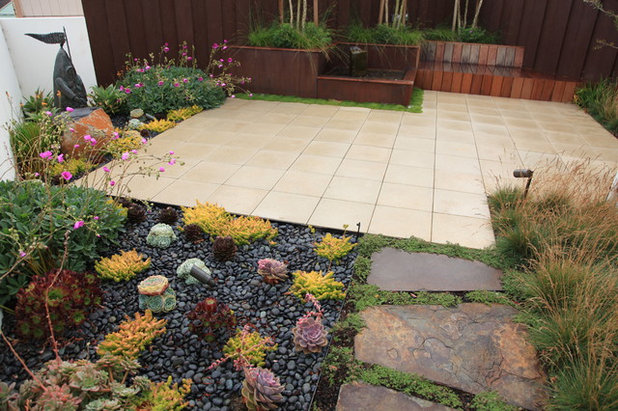
The Garden Route Company
3. Give the path a proper feel. This is a twofold issue. If you’re going to create a stepping-stone path, the stones need to be placed a comfortable distance from each other.
An average distance is 36 inches from the center of one stone to the center of the next stone, Ayers says. The gaps between stones should usually be no more than 4 inches. The actual distance may differ depending on who the path is for: A tall, athletic person, for example, will likely have a different stride length than someone more petite.
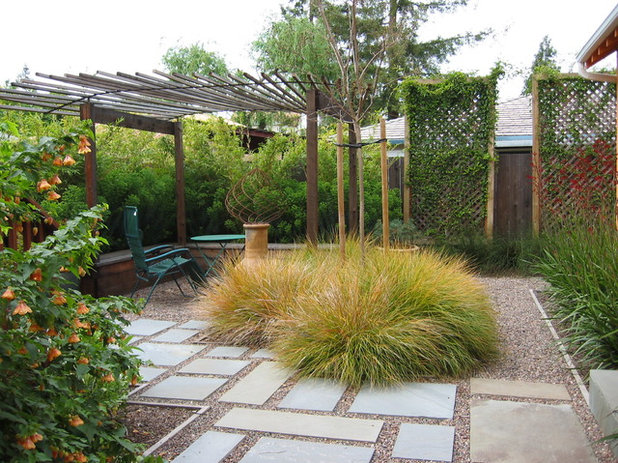
The Garden Route Company
The other issue of comfort is stability. You simply can’t ask people to walk on a stepping-stone path that’s wobbling. It’s disconcerting and potentially dangerous.
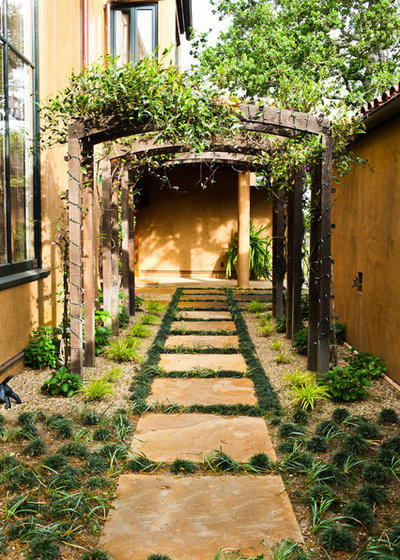
Lou Penning Landscapes Inc.
Ayers suggests that stepping stones be at least 18 by 24 inches big and 1½ inches thick. "The generous surface dimensions will increase stability because of the stones' resulting weight and shape, while the thickness will keep the step from cracking," she says. "Place the stones on a level foundation of sand, mortar or pea gravel for best results."
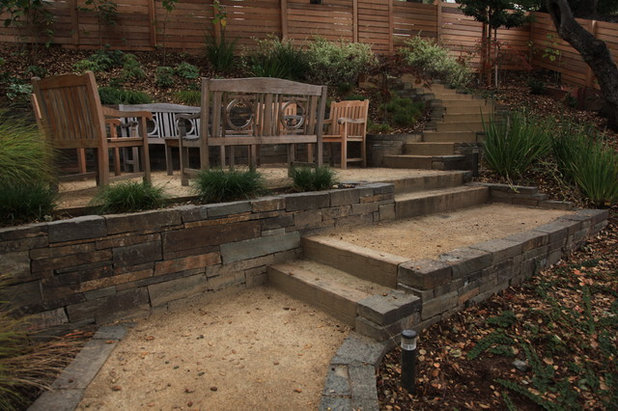
The Garden Route Company
If you're making a path out of decomposed granite, place the path at a higher elevation (1½ inches or so) than the surrounding land so water doesn’t puddle.
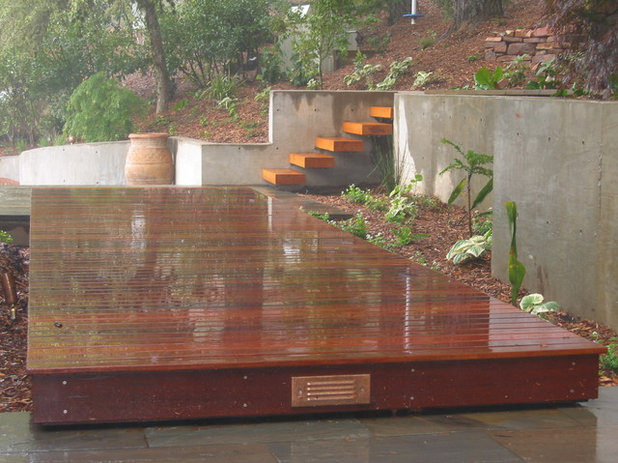
The Garden Route Company
MaterialsPaths can be made of wood, concrete, brick, decomposed granite, flagstone or any other material that feels good to walk on, offers a grip when wet and won’t wash away.
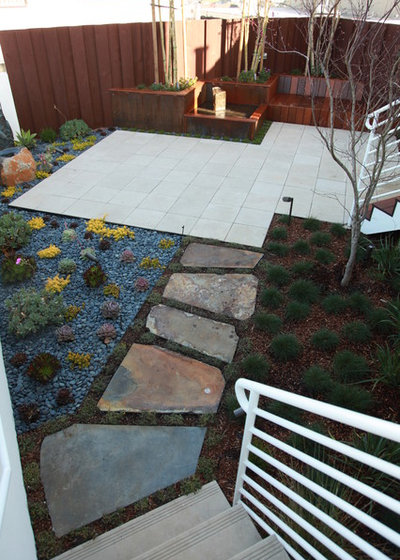
The Garden Route Company
If you're going with a stepping-stone path, use the gaps between the steps as another opportunity to add beauty. For living joints Ayers likes to use creeping ground covers like elfin thyme, dymondia and baby tears. “Recess the plants below the top of the stone by a minimum of a half inch,” Ayers says. That will keep the stones visible, preventing trips.
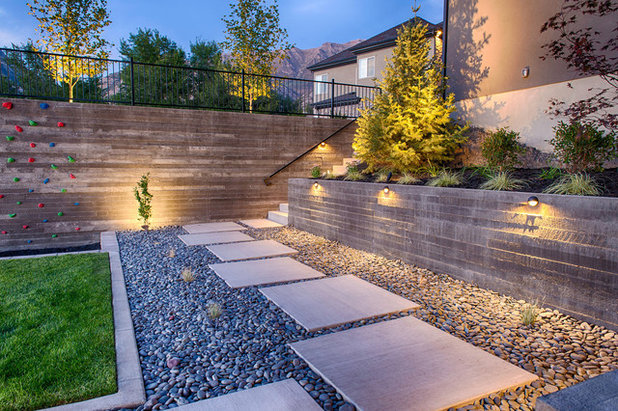
Decorative Landscaping
Gaps, or joints, can also be filled with decomposed granite, concrete, a different type of stone than the step, river rocks, pebbles, gravel, beach glass or marbles.
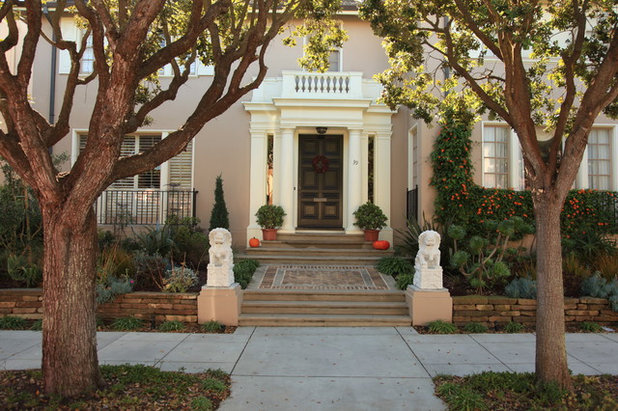
The Garden Route Company
Setting the PaceThe type of path you choose will set the pace for how quickly or slowly someone will get to the intended destination. If you’re trying to get guests to the front door, a straight path makes the most sense. “An entry path is ideally at least 5 feet wide so that two people can walk side by side comfortably,” says Ayers.
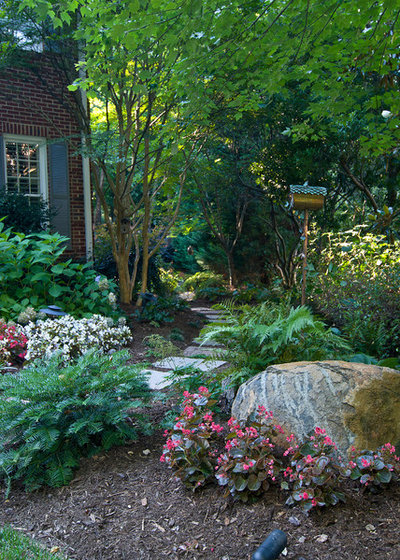
Jan Enright Creations
A meandering garden path, however, can be much narrower, as the intention is for guests to follow it to discover what lies ahead. “If you want someone to linger,” says Ayers, “curve the path around focal points, like a tree, boulder or berm of land. The most engaging paths curve around points of interest rather than arbitrarily twist and turn.”
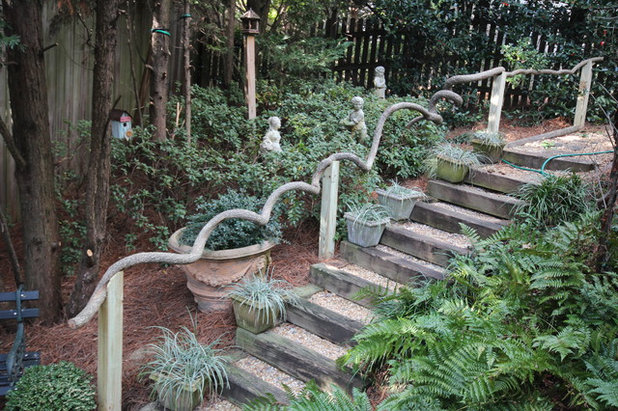
Paces Construction Co
Plant LayoutRegardless of a path’s destination, make the journey a visually appealing one with a variety of features.
Which features you choose depends on how long you wish to capture someone’s attention. “For a straight, wide path that leads to a front door or garage,” Ayers says, “I’d offer a single species of flora, like grasses. This way they can enjoy it while walking directly straight through. On the other hand, a meandering path might get a large variety of species to hold someone’s attention longer.”
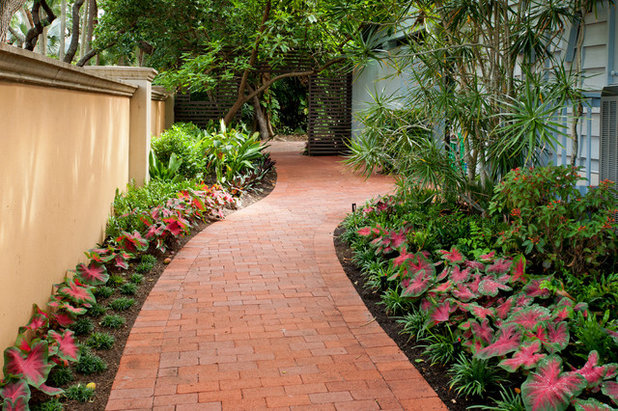
Dane Spencer Landscape Architecture
Your turn: We'd love to see a landscape path you've created. Please share a photo in the Comments below!
More photos: Browse thousands of inspiring path designs





